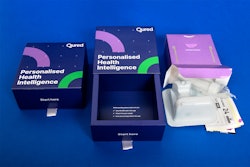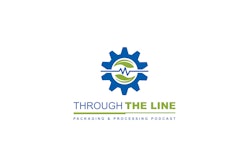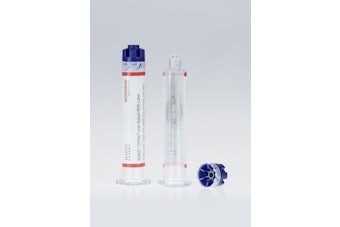Cell and gene therapies, along with manufacturers’ needs for near-constant connectivity and supply chain tracking of healthcare products, require advanced logistics offerings.
To further discuss trends in supply chain logistics, Healthcare Packaging spoke with Sam Herbert, President of World Courier, a part of AmerisourceBergen. For five decades, World Courier has supplied healthcare logistics, delivering medicines to those that need them. In the 1980s, the company handled the first clinical trial related to HIV and lobbied airlines to transport samples to allow the scientific community to progress AIDS research.
Healthcare Packaging (HCP): What are some of the main changes in healthcare logistics you’ve observed recently?
Sam Herbert (SH): With the emergence of personalized medicines, such as cell and gene therapies, treatments require robust logistics plans that are capable of incorporating patients as part of the supply chain. Recently, the U.S. Food and Drug Administration announced that, by 2025, it expects to approve 10 to 20 cell and gene therapies every year, raising the stakes for manufacturers looking to successfully bring their therapies to market.
Aside from the breakthroughs of personalized medicines, the demands of manufacturers continue to heighten with increasing pressure to deliver specialty medicines with specific requirements, such as timely delivery with precise temperature controls. An unbroken temperature chain is essential to both patient safety and product success, and it demands flawless execution—from the selected transport route to how the packaging is evaluated, validated and used to maintain product integrity across all conditions.
To meet this demand, we’ve seen the emergence of time and temperature tracking that provides manufacturers with a full line of sight into their product’s journey, in addition to innovations in packaging solutions.
For example, in 2016, we launched Cocoon, a packaging system for pallet-sized shipments designed to maintain temperature up to 168 hours (seven days) across three precise ranges, including frozen, controlled ambient and refrigerated. For those seven days, it can protect the integrity of products that require temperatures as low as -25 degrees Celsius, regardless of how hot the exterior is. It’s also 30% lighter than comparable products and reduces transport costs.
HCP: How do small patient populations drive change?
SH: New and emerging medicines require innovative, patient-centered supply chains and, as a result, advanced logistics plans. As treatments become more personalized, they are naturally being designed to treat smaller patient populations with very specific shared characteristics.
In order to include enough eligible patients in clinical trials, many pharmaceutical manufacturers are having to make their therapies available in more jurisdictions, or once a product is commercialized, it may need to be transported to patients scattered around the globe. Yet, these therapies are sometimes the most susceptible to being compromised. So, while they are traveling some of the greatest distances, we are also seeing requests from their pharmaceutical manufacturers for greater traceability as their products move across the supply chain.
HCP: What effect does this have on the manufacturer/logistics partner relationship?
SH: Along with visibility, these manufacturers are also looking for more assurances that their logistics partners have the capabilities to support innovative, sensitive products on a global scale.
Logistics providers are not only investing in new services but also finding ways to reinforce customer confidence in their offerings, such as securing Good Distribution Practice (GDP) certification, which is administered by DQS. World Courier received this certification, which verifies that our transportation, handling and storage processes across our global network of 140-plus offices are tested against global guidelines for medicinal distribution.
World Courier is the first logistics company to attain global GDP certification against three major GDP standards with international implications and the only provider to hold a GDP certification with such wide and global scope.
HCP. How are cryogenic charging stations helping cell and gene therapy patients?
SH: Before recent innovations in cryogenic shipping, earlier logistics models carried significant risk to a product’s viability as they relied on shipping products in a dry shipper from different hubs, which would increase lead times and distances travel for a product. Having a network of cryogenic charging stations creates flexibility and faster responses times, ultimately allowing better reaction to patient and hospital needs.
Additionally, cryogenic charging stations enable more patients to be treated with life-changing cell and gene therapies. Specifically, manufacturers have noted that one of the challenges facing the advanced therapy industry is the delivery of critical shipments, such as apheresis donations and final therapies. The short shelf life of fresh shipments, and the complexity of the resulting logistics, is encouraging therapy developers to qualify cryopreserved transport.
While cryogenic charging stations are relatively new for cell and gene therapies, World Courier has been managing cryogenic shipments for more than 20 years and has existing global quality systems in place.
HCP. How has logistics changed in terms of the speed of clinical trials and the pivot to commercialization?
SH: Now more than ever, manufacturers are looking for partners who have the expertise and flexibility to expand in scale as they move from clinical trial to global commercialization.
Previously, manufacturers could rely on a single partner that was responsible for a single clinical trial, located in a large hospital hub. However, for many rare and special diseases, the patients who experience them are not concentrated around large hospitals. It is critical that partners can provide a seamless experience as needs expand to the global market. To meet these demands, we have adapted our services to thread that needle for our customers.
As manufacturers scale their operations, they should look for partners that understand the complexities of customs and regulatory contingencies, and have back-up plans when complications arise. For many products, the last thing a manufacturer needs is a delay at customs, resulting in a temperature excursion.
Logistics partners must plan for every regulatory contingency, so shipments arrive on time and within the correct temperature range. With clinical and commercial storage and distribution services located in key markets across the globe, we can mobilize local experts quickly to expedite the import/export process in the local language, and often provide on-site attention to resolve any issues.
Being a part of AmerisourceBergen has also enabled us to expand our specialty logistics solutions to support this more global range of commercial distribution needs. We work with ICS in the U.S. and Innomar Strategies in Canada, both part of AmerisourceBergen, to augment our commercial 3PL storage and distribution services. We offer additional scalable storage solutions and managed warehouse space to accommodate products of all sizes and varying temperature and storage needs.
HCP. What future changes do you see in the logistics landscape?
SH: There are many changes we expect to impact the logistics landscape. Two major components that will influence the future are that regulations on the industry are likely to become more stringent and patients will receive increased access to life-saving medicines.
Patient conditions are becoming more complex and specialized treatments, including cell and gene therapies, are becoming more critical to ensure positive health outcomes. Therefore, it’s important for manufacturers to prepare for these changes within the pharmaceutical industry and work with partners who can provide the scalable resources needed for their products’ growth. We are constantly looking ahead and identifying solutions for future challenges that may disrupt this flow.























